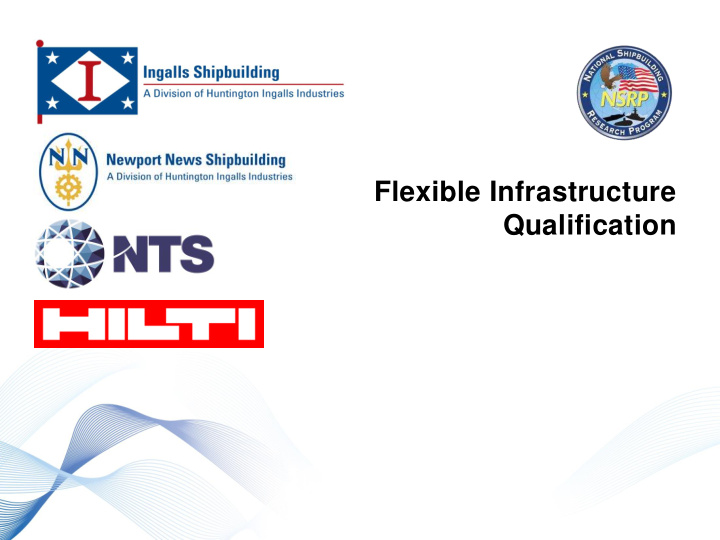



Flexible Infrastructure Qualification
What Is Flexible Infrastructure/Benefits • Flexible Infrastructure is a system of systems that will provide capabilities for rapid space changes without the use of “hot work”. Benefits: • Maximizes time for technology development prior to equipment installation during construction outfitting • Eliminates cost and schedule impacts associated with the traditional conflicts from re-work and change orders during new construction • Eases compartment reconfiguration to support changing missions and lifecycle refresh of electronic components 2
Flexible Infrastructure Design Elements • Deck Track System – 3 heights for various applications • 12” – high track • 9” – mid track • 6” – low track • Bulkhead Track System • Overhead Track System • Portable Stanchions and Bulkheads • Under Deck Ventilation – Used with 12” Deck Track System and overhead track • Flexible Lighting • Flexible Power Design elements can be individually integrated 3
FI Component Overview EQUIPMENT ENCLOSURE EQUIPMENT ENCLOSURE TRACK FITTING TRACK FITTING DECK TRACK DECK TRACK OVERHEAD TRACK SYSTEM BULKHEAD TRACK SYSTEM WELDED STUD WELDED STUD SHIP STRUCTURE SHIP STRUCTURE DECK TRACK SYSTEM PORTABLE STANCHIONS ATTACH TO OVERHEAD TRACK WITH A STEEL SLIP JOINT MOUNTED TO THE OVERHEAD TRACK. Bulkhead Track MEDIUM DUTY FITTINGS LIGHT DUTY FITTING 4
Goals • The project goals are to: – Qualify as many structural elements of FI to demonstrate compliance with shock and vibration requirements of Navy surface combatants and amphibious assault ships 5
Shock Test Video 6
Slow Motion Video 7
Recent Progress and Next Steps (Phase II) • Develop a Quick Look of the testing and present to interested parties • Have a working session and shock brief with Tech Warrant Holders – Discuss testing • Results • Qualification Process • Development of the Vibration Test Procedure • Vibration Testing • Report Generation (both Shock and Vibration) 8
Recommend
More recommend